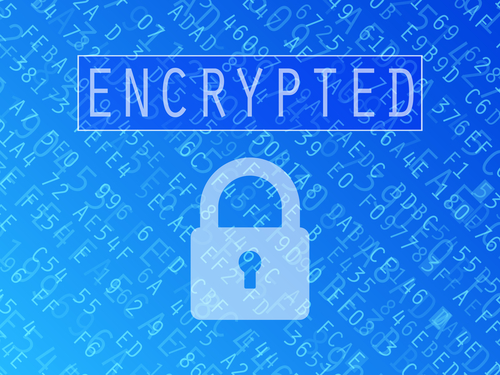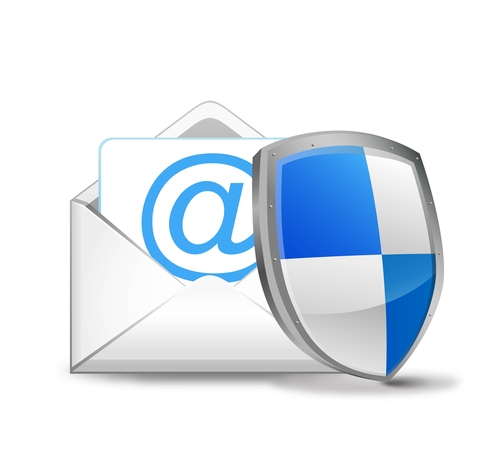July 22nd, 2013

Nearly every day, we hear about another catastrophic leak of data suffered by some of the world’s top companies. Either information vital to the way the company does business is intercepted, or customer’s personal identifiable information is. Both are crippling to the success of the company.
You need to take precautions in order to be as protected as possible against these devastating attacks. At the Up and Running blog, Emily Green has some suggestions for how to protect your company’s most important information.
- Change Your Passwords– You shouldn’t wait until your system is hacked to decide your passwords need to be strengthened. Make sure your passwords are as strong as possible and change them regularly to something equally strong. Changing user names is a good practice as well.
- Learn About Your ISP– When choosing an internet service provider, you may only consider the price and the speed of your connection. Your ISP should provide an extra measure of security, however, and if it doesn’t, it’s time to find a new one.
- Utilize Antivirus Software– Quality antivirus software keeps out viruses, malware, spyware and protects email from spam and phishing attacks. It also provides a firewall to further protect you. It is only effective, however, if you keep it updated.
- Use Encryption– Whatever data your company keeps, someone may find it valuable. Keeping it encrypted ensures that even if your network is compromised, your important data is still safe.
- Block Sites– Many times, the biggest threat to your security is your own employees. Unfortunately, human error results in most of the virus, malware and spam infections. Blocking potentially dangerous sites erases these possibilities.
To get the most protected, secure network available, contact Geek Rescue at 918-369-4335. We tailor a security infrastructure to your business and help keep your software updated and ready. Ask about our exclusive Safety Net service for the best in security solutions.
July 19th, 2013

For most of us, email is lacking in security. Your inbox is susceptible to spam, phishing and malware. While there are a number of security options to help protect you, it’s harder to protect valuable data you’re sending in a message. If you’re a Google Chrome user with a Gmail account, extension “SecureGmail” encrypts your message and locks it with a password to protect your information.
Alan Henry, of Lifehacker, notes that the password to unencrypt your message should be shared face-to-face if possible. This Chrome extension is easy to install and use. It adds an icon to your inbox, which gives you the option to lock messages you’re sending. It also prevents those messages from saving as drafts, so there will be no unencrypted version of it anywhere.
There are other tools available to protect messages in case you use another webmail provider, like Yahoo. If you’re truly concerned about the lack of security for your email, however, talk to the experts at Geek Rescue. They explain how you’re currently vulnerable and give you options to shore up weaknesses in your security. They offer Exchange mail for your business and have a variety of solutions for your personal email. Call Geek Rescue at 918-369-4335 today before your valuable data falls into the wrong hands.
July 19th, 2013

Despite your best efforts, it’s fairly likely you’ll click on a bad link or open an email you shouldn’t have at some point. When that happens and you get an email from a contact informing you that your address has been spamming everyone with malicious links, you’ll need to take action. Adam Levin has some tips on how you come back from an email hacking at Huffington Post.
- Change Your Passwords– It’s possible that whoever gained access to your email already changed your password and locked you out. If not, change to a stronger password to lock them out. Don’t limit the change to just the hacked email account either. Take this opportunity to make all of your important online accounts more secure. You have to assume every account associated with your email could have been compromised. You may want to do this on a different device than you usually access your email in case malware is allowing the hacker to steal your passwords.
- Report The Hack– Your email provider has a plan in place for compromised attacks. They will help you through this process. It’s also a good idea to tell any business you have an account with associated with the hacked email, especially a bank. And, of course, warn everyone in your contacts list to be wary of emails from your account.
- Scan With An Antivirus Program– As I mentioned, the hacker may have gotten your password initially thanks to a monitoring malware on your computer. Without checking for malicious programs, you may open yourself up to hacks of other accounts.
- Review Email Settings– The cyber criminal may have set up a forward email to continue monitoring your activity and stealing information. Be sure to delete those and make sure everything else is the way you want it.
Even after taking these necessary steps, you’ll want to closely monitor your bank accounts and credit score. Unfortunately, knowing your email has been hacked doesn’t mean you know all of the personal information the hacker gained access to. To keep your computer, email and identifiable information safe online, call Geek Rescue ta 918-369-4335. We use the latest software to keep your system safe from intelligent, and ever-evolving, attacks.
July 18th, 2013

A hacked site refers to a reputable, usually safe website that has been compromised and now infects your computer with malware, phishing scams and viruses. As Seth Rosenblatt reports for CNET, Google’s latest transparency report warns users that these hacked sites are far more numerous, and in many ways more dangerous, than dedicated attack sites.
Sites set-up for the sole purpose of infecting visitors were actually a rarity until a few years ago. Even now, Google counts less than 4-thousand attack sites currently in operation. These sites are easy to spot for most users, which makes them easy to avoid.
A hacked site gives malware distribution a better disguise. Malicious actions hide behind a trusted URL to infect visitors. Many times, the administrator of these sites has no idea their site is infecting visitors until Google flags them as a potentially harmful site. There are nearly 40-thousand sites across the web that Google has identified as hacked. That number is actually a dramatic improvement from only a year ago when hacked sites numbered about 60-thousand.
These hacked sites are typically used to distribute malware or for phishing attacks. The average response time for site administrators to remedy the problem after Google flags them is about 50 days. That means for about 2-months, a hacked site continues to operate and infect users’ computers.
Chances are, you’ve visited a hacked site at some point or at least seen a flagged site in your Google search results. While it isn’t advisable to visit these sites while they’re infected, having effective antivirus and security software in place can save you a lot of trouble. Even the most popular ecommerce and news sites can be hacked, so it’s vital that your computer is protected at all times. Bring your computer to Geek Rescue to protect it from malware attacks from hacked sites. Their techs safeguard your computer with the latest security software so you can be safe online. Come by or call us at 918-369-4335.
July 18th, 2013

Recently, cybercrime is growing and it’s being attributed to what’s being called “an industrial approach”, which means criminals measure their talents, programs and equipment as commodities to trade and sell. This makes the ability to attack a network a mere price tag away. John P. Mello Jr.’s article for CIO quotes Trend Micro’s Vice President of Cybersecurity as saying, “you can get enough capability to hack into almost anything for 600 bucks”.
The leading cybercrime trends were identified in a report from 41st Parameter, a fraud detection and prevention company. The first is data breaches, which refers to someone hacking into a database and stealing account information in order to sell or use for identity theft. In the past two months alone, Twitter, LinkedIn and LivingSocial have all been the victims of a data breach, which led to more than 50-million users’ passwords and personal information being compromised.
Businesses have to be aware of DDoS attacks. Short for Distributed Denial of Service, the goal is to disrupt a company’s operations, usually by disabling the website. This leads to an influx of calls, an increase in company costs and a decrease in customer trust and satisfaction. This is not necessarily done for profit, but just to hurt a business. Experts are finding, however, that often a DDoS attack is a diversion for another operation being run simultaneously.
Malware and viruses for all devices, particularly mobile due to a usual lack of security, are also significant threats. Geek Rescue protects you from all of these threats and more. Call them at 918-369-4335 for your home and business solutions before an attack infiltrates your network.
July 17th, 2013

The Children’s Online Privacy Protection Act was initially enacted in 1998 and mandated the collection of data from children under 13. Known as COPPA, the rule was amended in 2012 to cover a wider range of information, which addresses the increase in mobile usage and social media. This modified version went into effect July 1st, but Grant Gross, of ComputerWorld, reports that some websites are struggling to stay in compliance.
COPPA requires special care and security for children’s identifying information, including cookies, geolocations, photos and videos. Critics claim that what the FTC is asking of developers is next to impossible, however.
The rule is meant to protect children against targeted advertising and online tracking, so that’s where the FTC suggests websites focus their attention. Though violations of COPPA can carry up to a $16-thousand penalty, most believe there will be a grace period for developers to hone new policies and develop new strategies to comply.
As a parent, you can look for apps with a seal of approval from the Association for Competitive Technology and a group called Moms With Apps. Their Know What’s Inside campaign awards a seal of approval for developers who comply with the recommended practices of COPPA.
To be sure you keep your children completely safe online, you’ll also need Geek Rescue’s Safety Net. For about a dollar per day, you get the ability to keep children away from potentially dangerous and inappropriate sites. Call Geek Rescue ta 918-369-4335 to learn more about keeping your kids safe.
July 17th, 2013

You’re at home surfing the web, as you’ve been known to do. You follow a couple of interesting links and suddenly find yourself in a dark corner of the internet. A page appears in your browser claiming to be controlled by the “FBI Cyber Department” or “FBI Cybercrime Division”. They tell you they’ve seized control of your browser, recorded your activities and you will face legal action unless you pay a sizable fine. To show they mean business, they flash a pop-up of displaying your current location.
Now what do you do? Attempting to leave the page only causes the cycle of messages to start over and trying to close the browser proves fruitless. Paying the fine, however, would be just as pointless.
This site is a scam, as you may have already guessed. It’s accurately called ransomware because of the way it holds your computer hostage and demands payment. Previously, we warned you about a virus that similarly locks down your computer. The virus is difficult to get around, but there are some things to try if you come across a ransomware site, as Topher Kessler details in his post at Cnet.
Because this site is based off a relatively simple JavaScript code, it can be thwarted by disabling JavaScript in your browser. This will be an option found in the settings. Once JavaScript is disabled, the window can be closed like normal.
If you can’t find the JavaScript option or don’t want to go that route, force quit the browser. Unfortunately, your browser may automatically take you to the last page of your previous browsing session, which puts you back where you started. There are ways to disable this function, however.
If you happen to be using Safari, simply reset it from the application menu. These simple fixes will allow you to regain control of your browser and your computer. If you continue to experience trouble or want to safeguard against other malicious attacks, Geek Rescue is always here to help. We have the experience and know-how to restore your computer after any attack and safeguard it for the future. Come by or call us at 918-369-4335.
July 17th, 2013

Have you heard of a Distributed Spam Distraction or DSD? It refers to the use of a flood of spam emails overwhelming your inbox to distract you from important emails detailing a cybercriminals real actions. John P. Mello details the dangers of a DSD attack for CIO.
Though still fairly rare, there’s been a spike in the number of DSD occurrences since the beginning of the year. The attack can last up to 24 hours and send a deluge of 60-thousand messages to your inbox. The spam is difficult to filter since it contains no malicious links or malware. The criminals make messages as simple as possible because their purpose is just to distract you.
If you experience a DSD attack, someone has obtained not only your specific email address, but also account information and passwords for an important site. While you’re sorting through a ridiculous amount of emails, usually filled with random quotes from books, criminals make changes to your online accounts, possibly transferring money or making purchases. Since these actions automatically send an email to your inbox, the spam is used to cover them and keep you unaware.
It’s important to change passwords and stay diligent in combing through spam emails when experience a DSD attack. Contact Geek Rescue at 918-369-4335 immediately for help. They help you deal with the attack and protect you from future attempts to steal your data.
July 17th, 2013

Free WiFi is available everywhere, which is great to keep you and your devices connected to a high-speed internet connection. Those free networks, though, are notoriously lacking in security and provide opportunities for cyber criminals to take advantage of you. David Gorodyansky highlights some reasons for concern when using free WiFi while traveling this summer for Forbes, but his advice rings true even if you are just hanging around your hometown.
Do you have security software installed on your home computer? Chances are you wouldn’t think of surfing the internet at home without some sort of antivirus protection at least. Now, do you have similar software on your phone? For most people, the thought of protecting their smartphone has never entered their mind. Those same people use their phone to not only surf the web, but also to book reservations, make purchases and check their bank account. One could easily argue that your phone should be even more secure than your home computer.
Mobile devices are also often lost or stolen, which gives the thief immediate access to all the information you’ve accessed with that device. Phones have lock screens and apps to prevent access to your personal data and similar preventative measures are available for laptops and tablets.
For the specific problem of using unsecured mobile hotspots, there are encryption services to make your personal experience safe. By utilizing one of these services, you are free to take advantage of free WiFi but won’t be sacrificing security. Even with provisions in place, however, it’s a good idea to take some precautions. Encryption and other protections make it very unlikely for outsiders to steal your information, but not giving out personal information makes it completely impossible. If possible, refrain from making purchases or reservations with your credit card on your phone’s browser. Those can usually wait until you’re in the most secure environment possible.
To secure your mobile devices and to learn more about encryption services, like VPNs, contact Geek Rescue at 918-369-4335. They’ll not only make sure you have the most up-to-date security software, but also teach you about safe surfing habits.
July 17th, 2013

Part of being the proud owner of a laptop is dealing with the crippling frustration of freezes or crashes at some point. You can do everything possible to keep your device well-maintained, but chances are you’ll experience a freeze up eventually. While this is certainly aggravating, it’s not a complete disaster, as Brian Westover explains in his article for PC Mag.
The first thing to do in the case of a freeze, besides refraining from physically throwing your computer, is to try to diagnose the problem. The diagnosis can change the needed course of action, so you’ll need to think about the problem before knowing how to solve it.
The vents may be clogged with dust, lint or pet fur. That causes overheating, which leads to a forced shutdown. The solution may be as simple as clearing outside obstructions, like blankets, that are covering the vents. If there’s an internal clog, a can of compressed air could clean it out, but you may have a hardware problem that will need a professional repair. Geek Rescue specializes in repairing your computer, whether it needs a thorough cleaning or a hardware fix or upgrade.
You may have insufficient RAM available, which causes anything from sluggish, slow performance to a crash. You can research your own memory problems using Task Manager, but Geek Rescue does the legwork for you and has the tools to fix the problem once it’s been diagnosed.
Another possibility for a computer freeze is software issues. That’s an all-encompassing term that covers virus and malware infections, software bugs, BIOS changes and more. To fix the problem, try using System Restore to return to your last, healthy saved state. Then run a virus scan and updates. Geek Rescue takes care of these steps for you to find and solve the problem. They’ll also help keep the problem, or similar problems, from happening again.
These are just a small sampling of the possible reasons for computer problems. Though they are some of the most common, there are hundreds to thousands of other reasons for freezes. Take your computer to one of Geek Rescue’s locations to get expert analysis and a quick, efficient and effective fix. Come see us or call us at 918-369-4335.




















